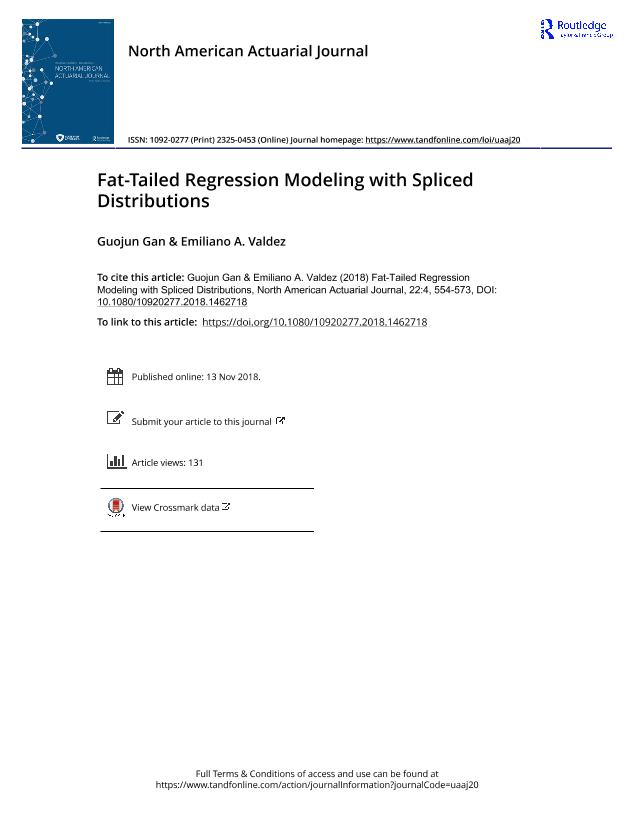Fat-Tailed regression modeling with spliced distributions

Contenido multimedia no disponible por derechos de autor o por acceso restringido. Contacte con la institución para más información.
| Tag | 1 | 2 | Valor |
|---|---|---|---|
| LDR | 00000cab a2200000 4500 | ||
| 001 | MAP20190014168 | ||
| 003 | MAP | ||
| 005 | 20190520164914.0 | ||
| 008 | 190517e20181203esp|||p |0|||b|spa d | ||
| 040 | $aMAP$bspa$dMAP | ||
| 084 | $a6 | ||
| 100 | 1 | $0MAPA20140000234$aGan, Guojun | |
| 245 | 1 | 0 | $aFat-Tailed regression modeling with spliced distributions$cGuojun Gao |
| 520 | $aInsurance claims data usually contain a large number of zeros and exhibits fat-tail behavior. Misestimation of one end of the tail impacts the other end of the tail of the claims distribution and can affect both the adequacy of premiums and needed reserves to hold. In addition, insured policyholders in a portfolio are naturally non-homogeneous. It is an ongoing challenge for actuaries to be able to build a predictive model that will simultaneously capture these peculiar characteristics of claims data and policyholder heterogeneity. Such models can help make improved predictions and thereby ease the decision-making process. This article proposes the use of spliced regression models for fitting insurance loss data. A primary advantage of spliced distributions is their flexibility to accommodate modeling different segments of the claims distribution with different parametric models. The threshold that breaks the segments is assumed to be a parameter, and this presents an additional challenge in the estimation. Our simulation study demonstrates the effectiveness of using multistage optimization for likelihood inference and at the same time the repercussions of model misspecification. For purposes of illustration, we consider three-component spliced regression models: the first component contains zeros, the second component models the middle segment of the loss data, and the third component models the tail segment of the loss data. We calibrate these proposed models and evaluate their performance using a Singapore auto insurance claims dataset. The estimation results show that the spliced regression model performs better than the Tweedie regression model in terms of tail fitting and prediction accuracy. | ||
| 650 | 4 | $0MAPA20080592011$aModelos actuariales | |
| 650 | 4 | $0MAPA20080567118$aReclamaciones | |
| 650 | 4 | $0MAPA20080601799$aGestión de siniestros | |
| 650 | 4 | $0MAPA20080592059$aModelos predictivos | |
| 773 | 0 | $wMAP20077000239$tNorth American actuarial journal$dSchaumburg : Society of Actuaries, 1997-$x1092-0277$g03/12/2018 Tomo 22 Número 4 - 2018 , p. 554-573 |

